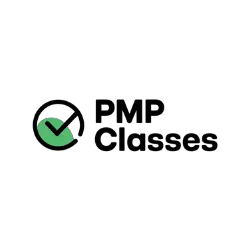As a Project Management Professional (PMP) exam candidate, you must understand the importance of self-assessment tools for your exam preparation. These tools can help you evaluate your knowledge, skills, and readiness to take the PMP exam. They can also identify your strengths and weaknesses, allowing you to focus on areas that need improvement.
Understanding the importance of self-assessment for PMP exam preparation
Self-assessment is a critical part of your PMP exam preparation. It helps you gauge your level of proficiency in the PMBOK® Guide (Project Management Body of Knowledge) and related concepts. By assessing your knowledge and understanding of the exam objectives, you can identify gaps in your preparation and take appropriate remedial actions to improve your performance.
One of the benefits of self-assessment is that it allows you to become familiar with the format and structure of the PMP exam. This can help reduce anxiety and increase confidence on exam day. Additionally, self-assessment can help you identify your strengths and weaknesses in project management, which can be useful for your career development.
It is important to note that self-assessment should not be the only method of preparation for the PMP exam. It should be used in conjunction with other study materials, such as textbooks, online courses, and practice exams. By combining different methods of preparation, you can ensure that you are fully prepared for the exam and increase your chances of passing on the first attempt.
Popular self-assessment tools used for evaluating PMP exam readiness
There are many self-assessment tools available in the market that can help you evaluate your PMP exam readiness. Some of the popular ones include:
- PMI’s PMP Exam Prep App
- PMP Exam Simulator
- PMP Exam Formula Study Guide
- PMP Exam Prep Questions, Answers & Explanations by Christopher Scordo
- PMP Pocket Prep
It is important to note that while these self-assessment tools can be helpful in evaluating your readiness for the PMP exam, they should not be the only resource you rely on. It is recommended that you also utilize study materials, such as the PMBOK Guide and other PMP exam prep books, as well as practice exams and study groups to fully prepare for the exam.
How to choose the right self-assessment tool for your PMP exam preparation
The choice of self-assessment tool depends on your unique needs and preferences. Consider the following factors when choosing a self-assessment tool for PMP exam preparation:
- Price and affordability
- User interface and ease of use
- Relevance to the PMP exam objectives
- Level of difficulty and variety of questions
- Availability of feedback and analysis of results
Another important factor to consider when choosing a self-assessment tool for PMP exam preparation is the reputation of the tool. Look for reviews and recommendations from other PMP exam takers to ensure that the tool is effective and reliable.
It is also important to choose a self-assessment tool that aligns with your learning style. Some tools may be more visual, while others may be more text-based. Consider your preferred method of learning and choose a tool that caters to that style.
Benefits of using self-assessment tools for PMP exam readiness evaluation
Using self-assessment tools for PMP exam readiness evaluation offers many benefits, including:
- Identification of knowledge gaps and areas that require improvement
- Familiarization with the PMP exam format, structure, and difficulty level
- Enhanced confidence and reduced exam anxiety
- Increased retention and application of key concepts and principles
- Improved chances of passing the PMP exam on the first attempt
Moreover, self-assessment tools provide a personalized learning experience that allows PMP exam candidates to focus on their specific needs and learning style. These tools offer immediate feedback on performance, enabling candidates to track their progress and adjust their study plan accordingly. Additionally, self-assessment tools are often more affordable than traditional exam preparation courses, making them a cost-effective option for PMP exam candidates.
Step-by-step guide on using self-assessment tools for PMP exam preparation
Follow these steps when using self-assessment tools for PMP exam preparation:
- Choose a reliable and relevant self-assessment tool for PMP exam preparation
- Set a realistic schedule and allocate sufficient time for self-assessment
- Take the self-assessment test under exam conditions and without interruptions
- Review your results and identify areas that require improvement
- Develop a personalized study plan to address the identified knowledge gaps and weaknesses
- Retake the self-assessment test periodically to monitor your progress and evaluate the effectiveness of your study plan
Self-assessment tools are an effective way to prepare for the PMP exam, but they are not a substitute for comprehensive study and understanding of the PMBOK guide. It is important to use self-assessment tools in conjunction with other study materials, such as textbooks, online courses, and practice exams.
Additionally, it is important to stay motivated and focused during the self-assessment process. Set achievable goals and reward yourself for meeting them. Join a study group or find a study partner to keep yourself accountable and motivated. Remember that passing the PMP exam requires dedication, hard work, and a commitment to ongoing learning and professional development.
Common mistakes to avoid when using self-assessment tools for PMP exam readiness evaluation
Avoid the following common mistakes when using self-assessment tools for PMP exam readiness evaluation:
- Not using a reliable and relevant self-assessment tool
- Not taking the self-assessment test seriously or under exam conditions
- Not reviewing and analyzing the results in detail
- Not developing a personalized study plan based on the self-assessment results
- Not retaking the self-assessment test periodically to monitor progress and evaluate the effectiveness of the study plan
It is important to note that self-assessment tools should not be the only method used to evaluate PMP exam readiness. While they can provide valuable insights into areas of strength and weakness, they should be used in conjunction with other study materials and resources.
Additionally, it is important to remember that self-assessment tools are not infallible and may not accurately reflect your true level of readiness. It is important to use them as a guide and not rely solely on their results.
How often should you use self-assessment tools during your PMP exam preparation?
You should use self-assessment tools periodically during your PMP exam preparation to monitor your progress and evaluate the effectiveness of your study plan. It is recommended to take the self-assessment test at least twice: once at the beginning of your preparation and again after completing the study plan.
How to interpret and analyze your results from PMP self-assessment tools
Interpreting and analyzing your results from PMP self-assessment tools helps you identify your strengths and weaknesses, enabling you to focus on areas that require improvement. The following points can help you interpret and analyze your self-assessment results:
- Identify the areas where you performed well and scored above the passing threshold
- Identify the areas where you struggled and scored below the passing threshold
- Compare your results with the passing score and determine if you are on track for success
- Analyze the feedback and explanations provided for the correct and incorrect answers
Tips on how to improve your PMP exam readiness based on your self-assessment results
Based on your self-assessment results, you can take the following steps to improve your PMP exam readiness:
- Focus on the areas where you scored below the passing threshold
- Review the feedback and explanations provided for the incorrect answers
- Revisit the PMBOK® Guide and related study materials to further understand the concepts and principles
- Use mnemonic devices, flashcards, and other memory aids to enhance retention and recall of information
- Take practice tests and simulation exams to further reinforce the knowledge and skills acquired
Real-life success stories of using self-assessment tools for PMP exam preparation
Many PMP exam candidates have reported success in using self-assessment tools for their exam preparation. They have achieved high scores and passed the exam on the first attempt. Some testimonials include:
“The PMP Exam Simulator was the best investment I made for my PMP exam preparation. The questions were challenging and diverse, and the explanations were comprehensive. I scored above the passing threshold in all knowledge areas. Highly recommended!”
“The PMP Pocket Prep app was my go-to tool for studying on-the-go. The questions were insightful and well-structured, and the app was easy to navigate. I improved my knowledge and confidence in the exam topics significantly after using this app. Thank you!”
Best practices for using self-assessment tools for evaluating PMP exam readiness
Follow these best practices when using self-assessment tools for PMP exam readiness evaluation:
- Choose a reliable and relevant self-assessment tool
- Set a realistic schedule and allocate sufficient time for self-assessment
- Take the self-assessment test seriously and under exam conditions
- Review and analyze the results in detail
- Develop a personalized study plan based on the self-assessment results
- Retake the self-assessment test periodically to monitor progress and evaluate the effectiveness of the study plan
Overcoming common challenges when using self-assessment tools during your PMP exam preparation
Using self-assessment tools during your PMP exam preparation can pose some challenges. The following tips can help you overcome these challenges:
- Choose a self-assessment tool that matches your learning style and preferences
- Allocate sufficient time for self-assessment and avoid distractions or interruptions
- Do not get demotivated or discouraged by low scores or incorrect answers
- Use the self-assessment results as feedback and a roadmap for improvement
- Stay focused and motivated by setting realistic goals and celebrating small successes
The role of self-assessment in maintaining your PMP certification after passing the exam
Self-assessment is not only critical for passing the PMP exam, but it is also essential for maintaining your PMP certification after passing the exam. You must earn 60 Professional Development Units (PDUs) every three years to maintain your certification. Self-assessment helps you identify the areas where you need to acquire or enhance your knowledge and skills to earn the required PDUs.
Frequently asked questions about using self-assessment tools for evaluating PMP exam readiness
Here are some frequently asked questions about using self-assessment tools for evaluating PMP exam readiness:
- Q: Can self-assessment tools guarantee my success in the PMP exam?
- A: No, self-assessment tools cannot guarantee your success in the PMP exam. They are only a part of your exam preparation strategy. You must also use other study materials, such as PMBOK® Guide, practice tests, simulation exams, and study groups to enhance your knowledge and skills.
- Q: How many times should I take the self-assessment test?
- A: It is recommended to take the self-assessment test twice: once at the beginning of your preparation and again after completing your study plan.
- Q: Can I skip the self-assessment and still pass the PMP exam?
- A: It is not advisable to skip the self-assessment as it helps you identify your knowledge gaps and areas that require improvement, and it also familiarizes you with the exam format, structure, and difficulty level.
- Q: Are self-assessment tools expensive?
- A: The cost of self-assessment tools varies depending on the product, brand, and features. Some tools may be free, while others can cost anywhere from a few dollars to hundreds of dollars. It is essential to choose a tool that meets your needs and is within your budget.
- Q: Can I use self-assessment tools for other project management certifications?
- A: Yes, you can use self-assessment tools for other project management certifications, such as CAPM, PMI-ACP, and PMI-PBA. However, you must choose a self-assessment tool that aligns with the exam objectives and format of the certification.
Conclusion:
Self-assessment tools are instrumental in evaluating your PMP exam readiness. You must choose a reliable and relevant self-assessment tool, take the self-assessment test seriously, review and analyze the results in detail, develop a personalized study plan based on the self-assessment results, and retake the self-assessment test periodically to monitor your progress. Self-assessment is not only critical for passing the PMP exam, but it is also essential for maintaining your PMP certification after passing the exam.




